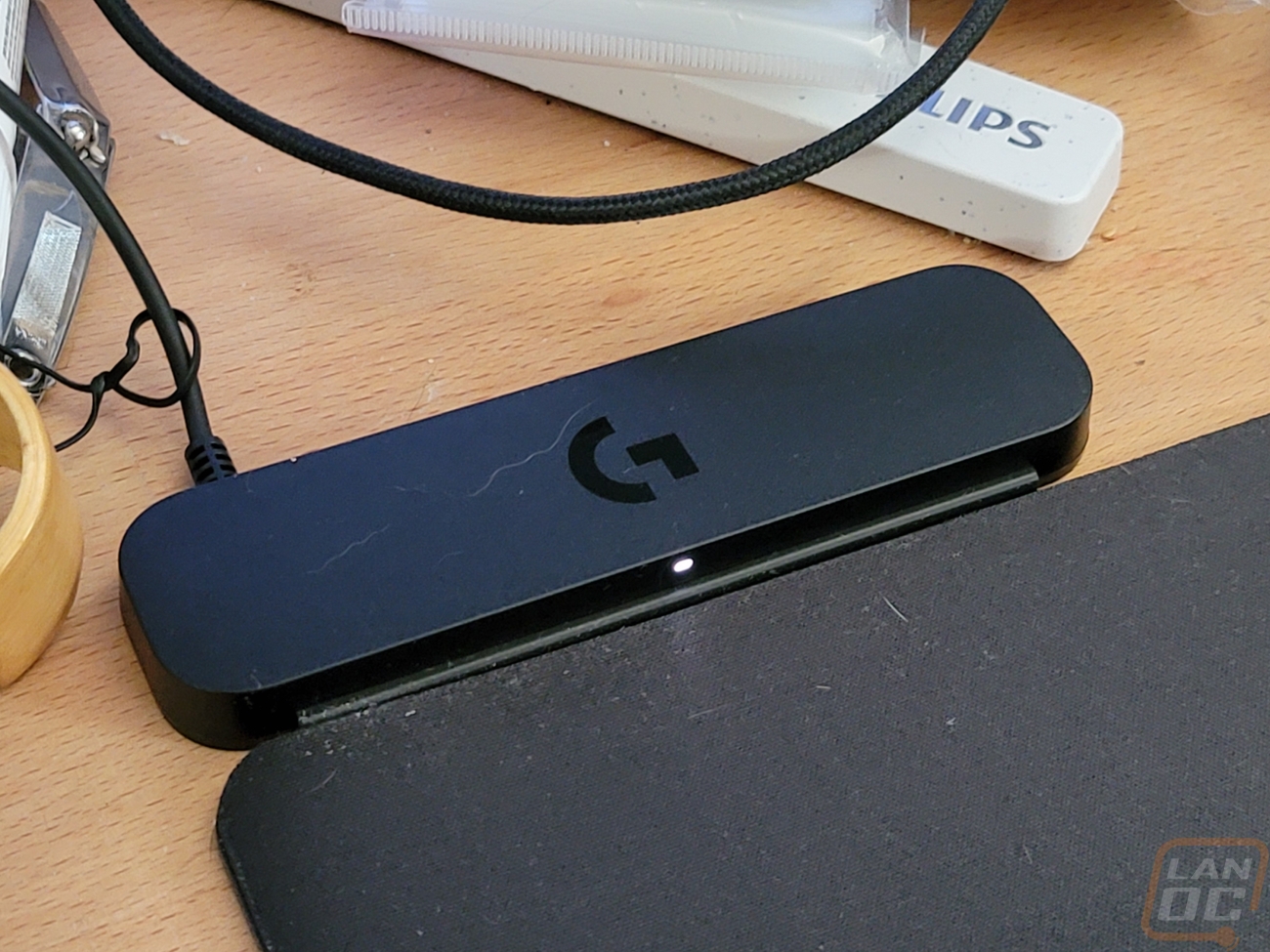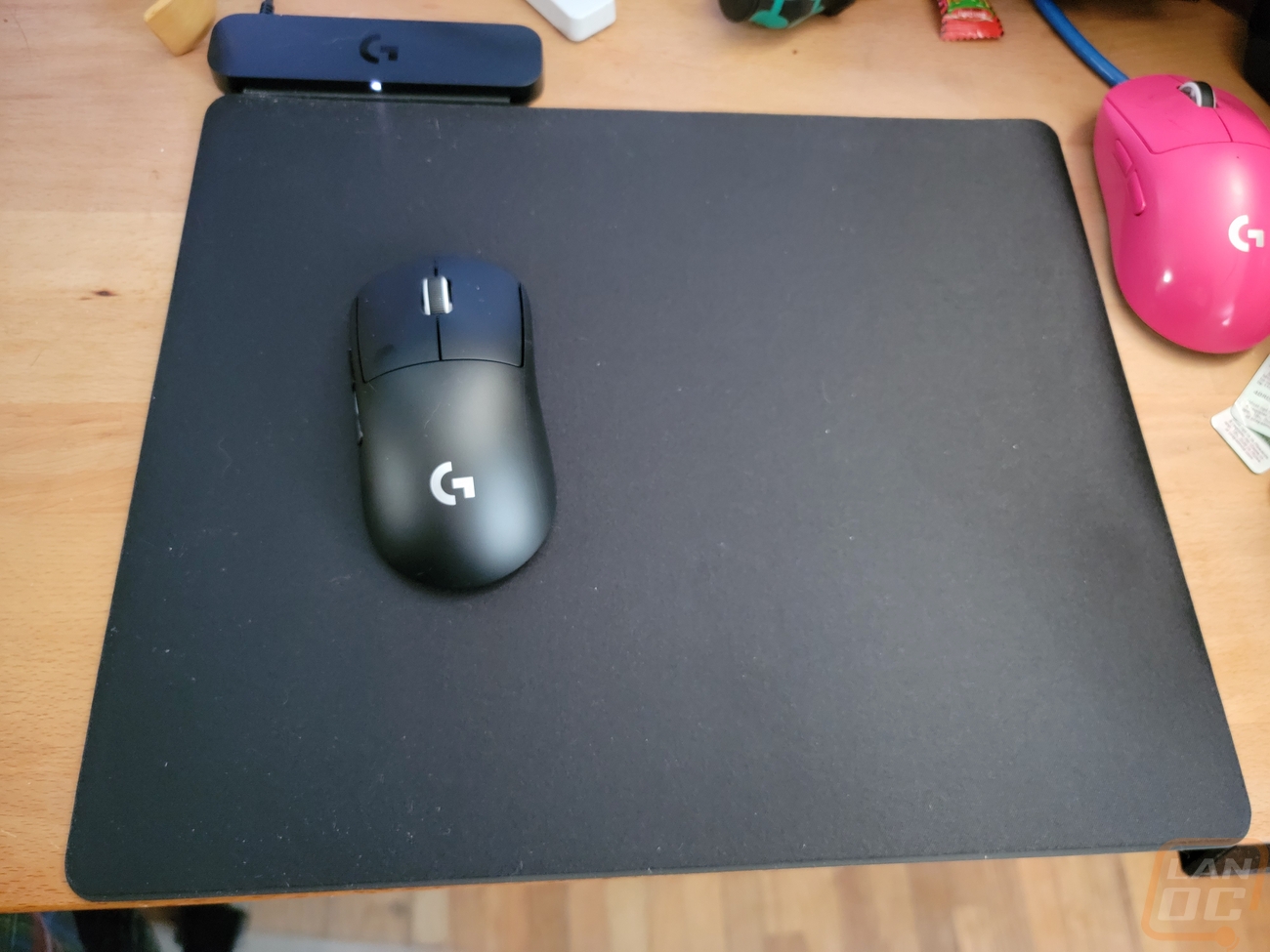Performance
For testing, I have been using the Powerplay 2 along with the Logitech Superlight 2c that they sent along with it for testing. Having used the original Powerplay for the last seven years, there wasn’t too big of a fuss when switching over. The biggest thing when getting things set up was actually having to have the wireless dongle from the mouse, whereas with the original Powerplay, I could use the wireless receiver built into it. I mentioned it previously, but I do understand the need to drop that feature, mice like the Superlight 2c, for example, now come with more capable receivers to handle the higher refresh rates. But as someone who doesn’t have their PC up on their desk, and with a larger desk, I would prefer there to be a plug for the receiver right on the Powerplay 2. Logitech does give you an adapter to plug the receiver into the end of the mouse’s charging cable to get the receiver up close to your mousepad, but that’s not the cleanest setup when we already have a cable running to the Powerplay 2. That said, because the Powerplay 2 doesn’t have any RGB or the receiver inside, the silver lining is that it doesn’t actually need to be plugged into your PC, it just needs power. So I was able to plug it into the USB charger already on my desk, keeping things a little simpler.
With the Powerplay up and running, I popped the Powerplay coin into the bottom of the Superlight 2c, and once the receiver was also plugged in, I was up and running with the mouse charging. I always find it interesting when you first drop a mouse on the mat that doesn’t have a good charge, it creates enough heat that you can feel it when you move around, if you leave it in one spot long enough. This isn’t an issue at all and isn’t new, but it's something to note. Once the mouse gets charged up, it won’t happen again. Because the Powerplay 2 is independent, I did notice a quirk when messing around. It is possible to charge more than one Powerplay mouse at the same time, but you do need the original Powerplay 2 coin in one of the mice to kick the charger on. With my original PowerPlay coin in a mouse, it wouldn’t turn on, but putting the new coin on the mat at the same time would turn the light on the mat and start charging. When charging low powered mice, the Powerrplay 2 pulled half a watt in total, and it was less than that at other times.
With the Powerplay 2 using the same footprint as the original Powerplay, people who like a huge mousepad may not have enough room but over the years, I haven’t had issues with space. In fact, I often have a phone or something else sitting on the pad as well, and still have room, but I do run a higher DPI than some people for my mice. Because the size is the same and the charging box is in the same spot, I do still have issues with it running into my monitor's feet. But the new, thinner mouse pad does help with the thickness issues that I had with the Powerplay originally. The edge doesn’t have a lip anymore, as well, to keep the pad from moving around because of the new static cling finish on the bottom of the pad, so that doesn’t push up into your arm as well. I do still wish we also had a matching hard pad to go with this design, however as that is still my preferred pad surface.


Most importantly, the big feature that hasn’t changed is that you never have to worry about charging your wireless mouse. You get a true wireless experience with no cord on the mouse, and you never have your mouse dying in the middle of a game at the worst possible time. It’s completely set it and forget it. Even if you pull your mouse off the pad, with the exception of the G309, which you can run on the Powerplay 2 with just a capacitor and no battery to save weight, you still have nearly a full charge with any other mouse that should last multiple days away from the Powerplay 2. This is perfect if you pack up and take your mouse to a LAN, for example.

